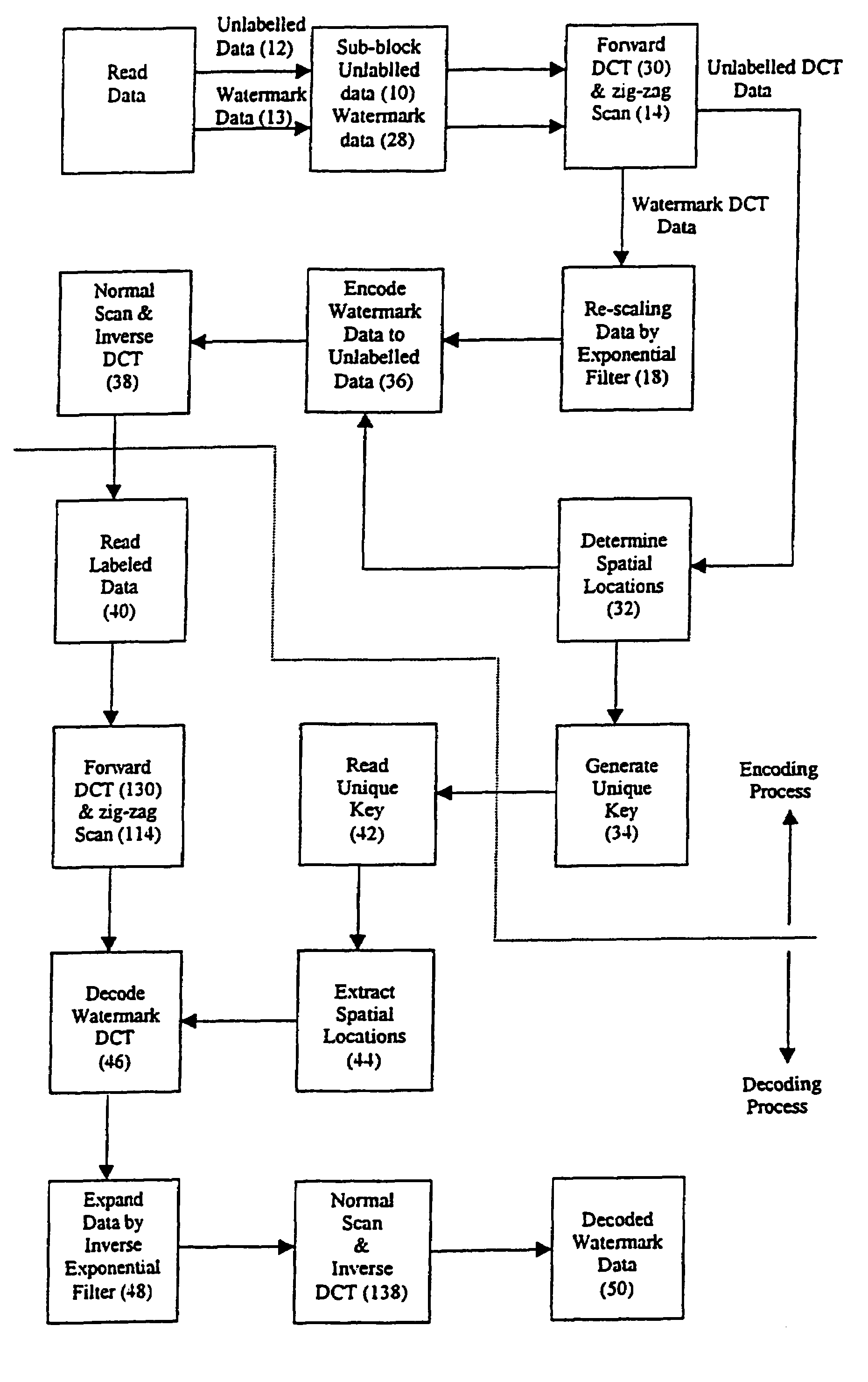Methods for embedding image, audio and video watermarks in digital data
a digital data and audio and video technology, applied in the field of digital communication and multimedia, can solve the problems of increasing the amount of data to be inserted, and previously considered to be difficult to achiev
- Summary
- Abstract
- Description
- Claims
- Application Information
AI Technical Summary
Benefits of technology
Problems solved by technology
Method used
Image
Examples
Embodiment Construction
[0073]Embodiments of a digital watermarking method will now be described in which the coefficients of a Discrete Cosine Transform (DCT) are employed. However, implementations of the invention are not limited solely to the use of DCT, and other orthogonal transforms such as discrete Fourier, Walsh-Hadamard, Haar, Sine and Wavelet transforms can also be used to good effect. In the preferred embodiment, both unlabelled data and watermark image data are first converted into two-dimensional matrices and then divided into sub-blocks, prior to orthogonal transformation. The present invention requires that the dimension size of the unlabelled data set must be at least twice the dimension size of the watermark data in each dimension, to fulfil a requirement that is closely related to the concept of the Shannon's sampling theorem. For example, for a 512×512 unlabelled image, the watermark image should be typically 256×256 or smaller.
[0074]Preferably each sub-block of the matrices is 8×8 pixel...
PUM
 Login to View More
Login to View More Abstract
Description
Claims
Application Information
 Login to View More
Login to View More - R&D
- Intellectual Property
- Life Sciences
- Materials
- Tech Scout
- Unparalleled Data Quality
- Higher Quality Content
- 60% Fewer Hallucinations
Browse by: Latest US Patents, China's latest patents, Technical Efficacy Thesaurus, Application Domain, Technology Topic, Popular Technical Reports.
© 2025 PatSnap. All rights reserved.Legal|Privacy policy|Modern Slavery Act Transparency Statement|Sitemap|About US| Contact US: help@patsnap.com



